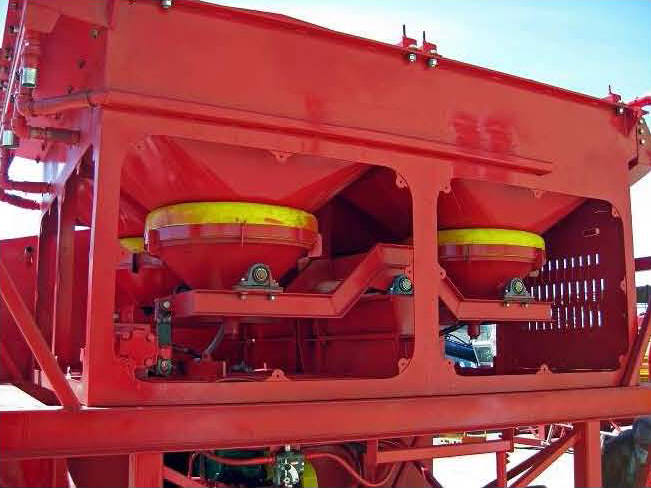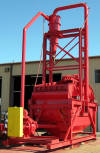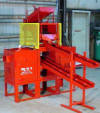
 |
|---|
TV5
TV6
T5x Trommel
Sluce boxes
Splitters
Feeder
S8 Trommel
Drying feeder
50" 4-Plex jig
T8 Trommel
S5x Trommel
S7 Trommel
Feed conveyor
Pumps
Finishing jig
Dual finishing jig
Stackable conveyors
Generators
Suction float
Hoses, Clamps
Auger fed jig with tailing discharge
Xtruder shaking table
|
Trade and Export of New & Used Gold Mining Equipment, Supplies and Gold Prospecting Tools

Call 1 (303) 659-8065.
We have been experiencing allot of other systems being replaced. The MS jig and sluice system is a very a popular choice for processing placer gold deposits. Operators who have experimented with spirals, cones, and centrifuges, are now changing to jigs. One reason for this may be the simplicity of operating Jigs, with low operating costs and proven recovery rates. MS Jig designs have proven to be efficient and effective collectors of gold.
Innovations in jig design that where done during the first half of the last century have been re-tested again, and with MS design technology, supersede the rest.
The MS 50 inches x 50 inches (1270 mm x 1270 mm) duplex or 4Plex cell arrangement has become standard for many in the industry. In this arrangement two cells are set in series with a drop between the cells. The rollover of the material as it passes over this drop between the cells further increases gold recovery. Material, which may have been riding on the top in the first cell, is rolled to the bottom of the flow and adjacent to the bedding. The effectiveness of this toss is demonstrated at each jig screen cleaning. Particles of coarse gold that escaped the first cell will be found in the first few trays of the second cell and fine gold is pulled out of the material flow into the Jig hutch.
How Jigs work
The MS Jig consists of a cell containing water with a screen on the top. Our designed to hold a certain volume of steel or stainless steel shot, placed on the screen. The hutch is an inverted cone that moves by means of an eccentric cam and a walking beam.
On the up, or expansion stroke, the water column is forced through the shot bed causing the shot bed to dilate and differential particle sorting to take place, based on Stokes Law of Hindered Settling. This allows the heavier particles on or near the shot bed to settle through the shot while the lighter particles are carried onto the tails.
Hutch water flow also aids in the suspension of the pulp as it passes over the screen providing for additional separation in the ragging. A large volume of water is added in the hutch to provide an upward flow through the screen during the up stroke while maintaining the flow of concentrate out the bottom. This provides a zone in the hutch, below the screen, where the flow is neither up nor down.
On the down stroke these heavier Gold particles are pulled down through the bed and settling through this zone are accelerated by the velocity of the flow. A rubber diaphragm between the cone and the jigging screen provides a positive displacement of the hutch water to insure jig bed pulsations. Gold is then discharged through the hutch concentrate valve at the bottom of the cell.
MSI Jigs provide maximum recovery at a high concentration ratio.

50" 4-Plex Roughing Jigs
50 inches - 4Plex Roughing Jigs, with electrical starter, power cable, variable speed drive, and shot bedding. We rate these 4Plex Jigs at up to 112 Tons per hour, with 7/16" minus (11 mm), average water usage of up to 480 Gallon per min (1800 liters per minute. )
50 inches - 2Cell (Duplex) Roughing Jigs, with electrical starter, power cable, variable speed drive, and shot bedding. We rate these Duplex Jigs up to 56 Tons per hour, with 7/16" minus (11 mm), average water usage of up to 240 Gallon per min (900 liters per minute.)
36 inches - Round Single Jig.
Jig Support Structures available.
Jigs and Sluices compared to: Wheels, Transverse belts, reverse spirals trommels and centrifuges.
Other machines or systems state claims to great recoveries, but it is a simple visualization, easy to understand, that if you can remove the gold from the turbulent flow of material, there is less loss, or maybe, simply stated another way, if your gold is rolling around in the tails, there is a significantly higher chance for gold loss.
Jigs pull your gold out of the material flow, so obviously, less chance for any gold loss, and Jigs can do so at high tonnage rates.
Jigging is one of the oldest proven processes used to separate heavy materials from the lighter materials, going back to ancient Egypt. Especially with newly added technologies, Jigs are hard to beat. Old timers early last century claimed over 99% recovery rates with jigs.
READ MORE DOWN THE PAGE























